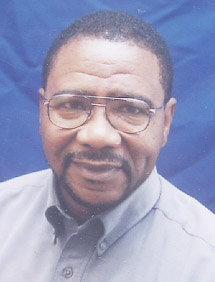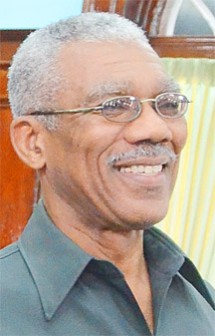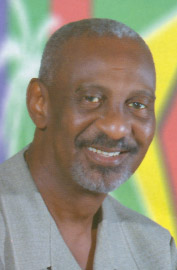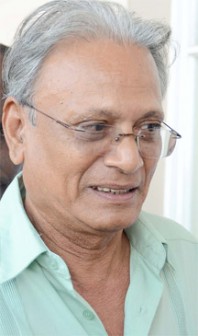The ‘green wave’ that followed the formation of A Partnership for National Unity last June, the results of the general and regional elections in November 2011 and the current configuration of parties in the National Assembly in January 2012 are now a matter of political legend. Four factors contributed most to the present political landscape.


First there was the widespread realisation that the ‘winner-takes-all’ style of politics that prevailed for the past 50 years had become dysfunctional. There simply had to be a change from perennial confrontation and pre and post-elections conflict to a more consensual political culture. The growth of presidential authoritarianism which had begun with Forbes Burnham had engendered a sense of weariness in large sections of the populace and – particularly in the last decade or so – demands for ‘shared governance’ or ‘power sharing’ have gained momentum.
Secondly, was the acute apprehension, especially during Bharrat Jagdeo’s presidency, that the People’s Progressive Party Civic administration might have run off the rails. Corruption, contraband smuggling drug-trafficking and violent crime were rampant and the PPP/C administration often appeared overwhelmed or else, struck a posture which suggested that they were unprepared to deal with the problem.
Thirdly, there was the formation of the Joint Opposition Political Parties (JOPP)–comprising the Guyana Action Party (GAP), National Front Alliance (NFA), People’s National Congress Reform (PNCR) and Working People’s Alliance (WPA) –in the wake of the 2006 general elections. These parties stayed together and began to hammer out a cooperation agreement.
Fourth was the decision of People’s National Congress Reform General Council to inaugurate a presidential candidate selection process. The incumbent party leader, Robert Corbin, announced that he would not lead the PNCR into the 2011 general elections. The PNCR’s General Council, meeting on July 10, 2010, followed this decision by examining the issues of alliances, coalitions and shared governance that were being bandied about for a decade. It also examined the modalities for the selection of a presidential candidate.


The PNCR, during the gestation of JOPP, served as a mere vehicle to facilitate consultations with GAP, WPA and the NFA. An alliance to contest the 2011 general election was always their common objective. The group’s spokes-man Lance Carberry explained that the parties agreed on certain broad issues. They announc-ed, in July 2010, that they would “work on building an alliance with civil society groups, including trade unions, religious, cultural, business and professional organisations.”
A technical team was formed to draft a Statement of Principles (SOP) to guide the proposed JOPP alliance.That Statement was based on the premise that a “positive transformation of Guyana” can be achieved only through a partnership that involves the widest representation of society as a precursor to “a government of national unity, based on a shared governance approach.” The parties agreed to develop a common electoral platform that would include a sustainable programme for the socio-economic, cultural and political transformation of the country along with necessary constitutional changes to institute shared governance.
The Joint Opposition Political Parties, having nourished the gestation process so far, was then formally dissolved. The leaders of the four founding parties – GAP’s Everall Franklin and Ian Melville; NFA’s Keith Scott; PNCR’s Robert Corbin and WPA’s Rupert Roopnaraine and Clive Thomas –on June 24 announced the formation of the APNU. They explained, then, that the Partnership was an association of political parties, organizations and citizens who, guided by its Statement of Principles, shared a common desire to ensure a ‘good life.’
The PNCR had already elected its presidential candidate, Brigadier David Granger, in February 2011. Granger was also selected as APNU’s presidential candidate and Rupert Roopnaraine was selected as prime ministerial candidate. A new logo was designed, a joint Manifesto – A Good Life for All Guyanese– was drafted and a joint slate of candidates was nominated to contest the elections. Five other organizations – the Guyana National Congress, Guyana People’s Partnership, Guyana Youth Congress, National Democratic Front, Justice for All Party (JFA) – eventually joined the Partnership’s founding signatories – GAP, NFA, PNCR and WPA.
Skeptical at first, the public subsequently changed its posture from one of skepticism to one of recognition that APNU represented a viable political force. Joint campaigning was conducted by APNU’s parties. When APNU staged a ‘Green Wave’‘Nomination Day’ parade on the streets of Georgetown -from the 1763 Monument to the City Hall on October 27 2011- hundreds of urban Guyanese came out to cheer. APNU, from that day, came to be regarded as the the most significant rival to the PPP/C for occupying the seat of government.
The PNCR, in the process of working with others to build the Partnership, was not a villainous manipulator. There was never any doubt that, with its experience, resources and popular appeal it would be APNU’s organizational backbone. Even so, it sought to not to dominate but to cooperate with its other nine partners.
Granger, APNU’s presidential candidate told the formal launching ceremony in July 2011 that the Partnership had assembled with the single mission of giving full meaning to Guyana’s constitution by creating an “inclusionary democracy” and doing away with the winner-take-all system. He said then, “That system has now become dangerously dysfunctional; our society under the PPP’s 19-year one-party regime has become more deeply divided than it has ever been at any time over the last 100 years. The tide of ideas in Guyanese politics has turned, today 15th July marks the birthday of the new politics.”
WPA’s Rupert Roopnaraine declared: “We are sounding the death knell of winner-take-all politics; never again must 51 per cent behave like 100 per cent and 49 per cent be treated as zero, never again must our election be felt as a victory of one race over the other,” Dr. Roopnaraine declared.
When the National Assembly convened last January, representatives of five parties were among the 26 seats allocated to A Partnership for National Unity. There were no villains or victims there.




